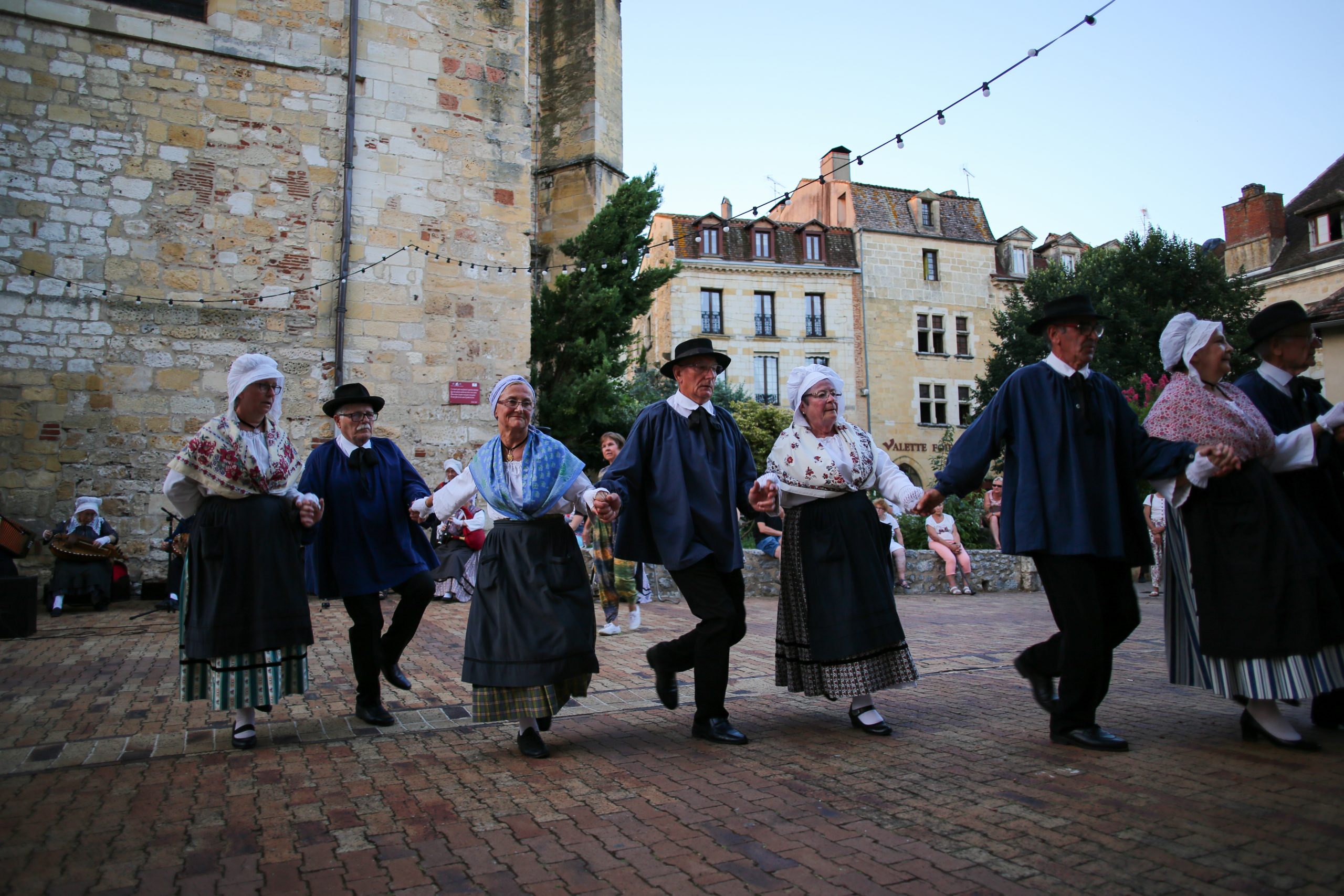There’s something quietly magnetic about Bergerac. You don’t rush there, you *arrive*, and then the rhythm of the place does the rest. The Dordogne River flows past as if it has nowhere else to be, and somehow, after a few minutes, you feel the same. Walking through the medieval streets feels a bit like drifting through a painting—timbered houses leaning toward narrow cobbled lanes, cafés tucked under sun-washed shutters, and little statues of Cyrano de Bergerac watching over the squares with a sort of amused permanence.
One of the first pleasures is simply wandering. There’s no map needed, no goal—just that gentle kind of urban exploration where everything feels charming by accident. Every few steps there’s a small wine bar, a boulangerie sending out fresh brioche perfume, or a quiet square framed by stone façades that haven’t changed in centuries. Eventually you’ll reach the riverfront at Quai Cyrano, and here the whole scene opens up: sunlight dancing on the Dordogne, lazy boats drifting along the water, vineyards filling the horizon like a painted backdrop.
In the photo, a lively scene unfolds in the charming town of Bergerac, France. A group of elderly men and women are performing a traditional folk dance in a quaint cobblestone courtyard. They are dressed in period attire; the women wear long skirts, aprons, and blouses adorned with shawls, while the men don dark trousers, white shirts, and wide-brimmed hats. Their outfits reflect the rich cultural heritage of the region.

The dancers hold hands in a circle, stepping in unison and smiling warmly, exuding a sense of joy and community. Behind them, the rustic stone walls of historic buildings create a picturesque backdrop, with the soft light of evening casting a warm glow over the scene. String lights hang overhead, adding a festive ambiance to the gathering. In the background, other townspeople and visitors sit on benches and steps, watching the performance and soaking in the traditional festivities. The entire image captures the essence of a close-knit community celebrating its heritage in a beautiful, timeless setting.
Wine tasting is almost a form of language here, and skipping it would feel wrong. The Maison des Vins, tucked inside an old cloister, makes it ridiculously easy to fall into the ritual. Glass in hand, you sit under medieval arches while someone explains Bergerac’s wine regions—not in a cold, snobbish way, but in that soft, proud tone that suggests the soil here means something deeper than agriculture. Reds, whites, rosés… the region doesn’t brag, but honestly, it could.
At some point, take a river cruise on a traditional gabarre. Sitting there while the Dordogne drifts under you feels almost meditative. The wind, the water, the quiet… if you’re the type who usually multitasks, this is where your brain will finally give up and let you exist in one moment at a time. And maybe that’s the real magic of the place—it slows the world down without asking permission.
Museums here have a quirky edge. The Tobacco Museum sounds odd at first (and it sort of is), but it’s woven into Bergerac’s agricultural history. You’ll walk through centuries of ritual, trade, and craftsmanship—pipes, snuffboxes, old trade documents—more fascinating than expected. And then there’s the Church of Notre-Dame, tall, calm, beautifully detailed, as if it exists purely to remind visitors how small the modern world really is.
If you linger longer, there are vineyards and sleepy villages nearby that make leaving town feel like stepping deeper into the same dream. Olive trees, sleepy farm roads, the occasional château… everything looks like a postcard someone forgot to edit because it was already perfect.
Truthfully, Bergerac isn’t loud, or flashy, or trying to compete with the big destinations that shout their grandeur. It whispers. And if you let it, that whisper turns into a feeling you quietly hope to return to someday.
Leave a Reply